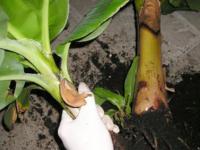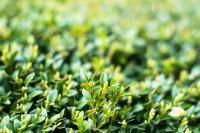Recognize and properly treat flower diseases
Plants, like animals and humans, can become ill. Learn to recognize flower diseases and to fight them with the right methods.
Recognize typical flower diseases
The following diseases are common in gardening and in Houseplants to be found. The symptoms and the course of the disease partly differ in the various plants.
Leaf spots: Yellow or brown spots on foliage leaves usually indicate a fungus that lives in the leaves. Neither pustules nor plaque can be seen on the surface. In the initial stage the leaves feel normal, later the areas are dry or soft and moist.
Real one mildew: You can see a white or light gray coating on the upper side of the leaves, stems and on the buds. The infected plant looks like you've sprinkled powder over it.
Downy mildew: You will see yellow spots on the tops of the leaves. Exactly under these spots there is a grayish coating on the underside, which turns bluish.
Root rot: In some plants, the leaves initially turn yellow and feel damp. Later the shoots dry up as if you had forgotten to water. Some plants begin to dry up immediately when the roots rot. The soil is wet and you notice a putrid smell. Root rot occurs more often in potted and container plants than in beds.
Yellow leaves can have many causes. Cucumber diseases are not always for it ...
Rust: rust-red pustules can be seen on the leaves, some plants also have a whitish to pink-colored coating.
Black soot: The disease shows itself as black spots on the leaves that enlarge in a star shape. After a short time the green will turn yellow and the leaves will fall off.
Wilt: Brown or black spots can be seen on the stems. The plant dries up even though it is getting enough water. At first it appears to recover at night, but dies after a few days.
illness |
Symptoms |
|---|---|
Leaf spots |
Yellow or brown spots in the leaves |
Powdery mildew |
White coating on the top of the leaves |
Wrong mildew |
Yellow spots on the upper side, gray-blue coating on the underside of the leaves |
Rot (root rot) |
Yellow and wet leaves, later the plants dry up |
rust |
Red-brown pustules on the leaves |
Black soot |
Black, mostly jagged spots on the leaves |
Wilt |
Black or brown spots on the stems, later the plants dry up |
Treatment of diseases
They are real flower diseases, almost all of which are caused by fungi. In some plants, viruses or bacteria are also possible causes.
The diseases are contagious. If possible, isolate affected plants. With all measures, please note that you can spread the spores and germs with your hands, clothing and tools.
Work with disposable gloves and change clothes before moving from diseased plants to healthy ones. Be sure to disinfect all tools with alcohol (95 percent) or flame them off.
The first measure is to cut off diseased leaves or roots and immediately dispose of them in a plastic garbage bag.
Fungal agents are suitable for injection. Some of the products are effective against different fungi, most of them only against a specific species. Be sure to get a fungicide that works against the fungus that has infected your plant. Note: Each of the diseases is triggered by a specific fungus.
A field horsetail brew is a good way to strengthen the plants. In the case of a strong infestation, however, this alone is not enough. Use is advisable for prevention or for strengthening after a treatment.
The following table shows the best way to deal with the various diseases:
illness |
treatment |
|---|---|
Leaf spots |
Cut off affected leaves, Strengthen the plant |
Powdery mildew |
Cut off affected parts, spray with fresh milk, Treat with a special spray |
Wrong mildew |
Cut off affected parts, treat with special spray |
Rot (root rot) |
Cut off rotten roots, Put the plant in fresh soil |
rust |
Cut off affected parts, Treat with a special spray |
Black soot |
Cut off affected parts, Treat with a special spray |
Wilt |
Dispose of the plant immediately. |
Prevention of plant diseases
The most important thing is that you take care of your plants properly. Choose a location suitable for the crops and dose the irrigation.
Fertilize the plants properly. Over-fertilization leads to rapid growth. The tissue remains loose and is prone to flower diseases. Too little fertilizer is less harmful.
The fungi that bother your plants survive in the soil. Make sure that water does not splash up from the ground and wet the leaves when watering. Underplanting with ground cover, a layer of mulch or gravel is helpful.
Many mushrooms specialize in certain flowers. Change the beds for new plantings and clean the flower pots thoroughly before filling in fresh soil and planting new flowers.
Combating is difficult and not always successful. It is for this reason that it is important to take precautionary measures.


